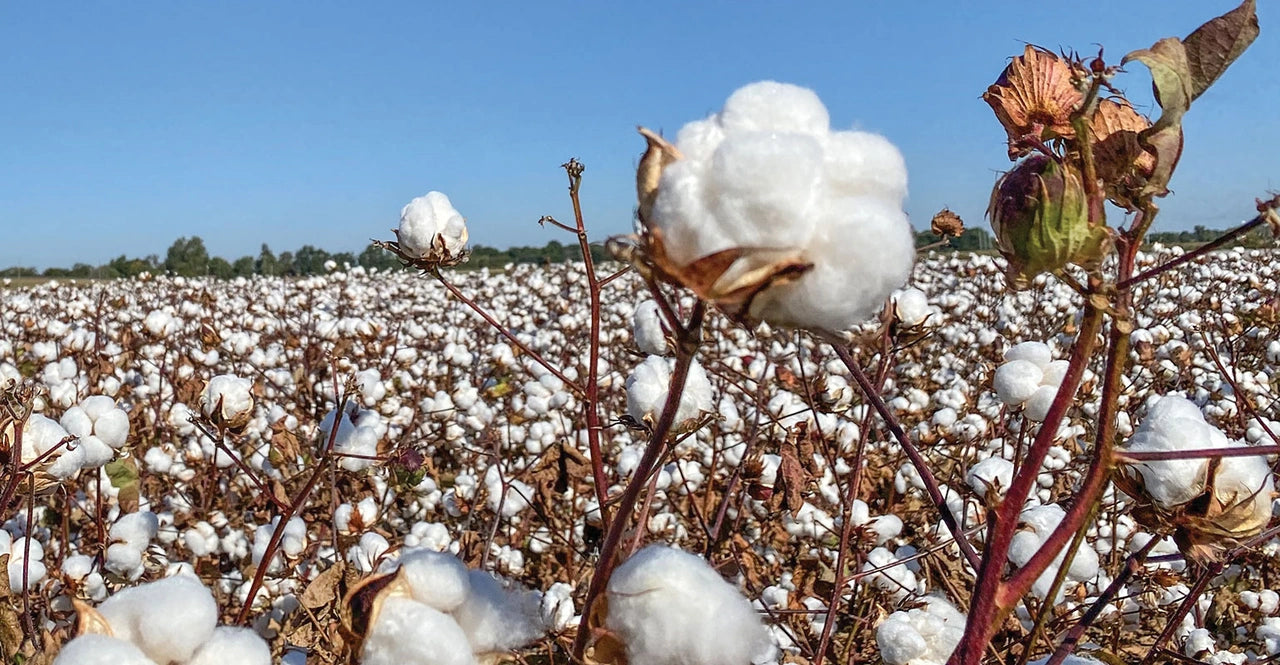
Here at Mosevic, denim is the star of the show, so I’m going to take you on a journey of discovery to learn how the cotton to make this wonderful world-renowned fabric is produced.
For the start of the journey, we’re in a hot, humid country, where the humble cotton seed is planted. Cotton thrives in warm regions and India, China, Uzbekistan and the United States are the top cotton growing countries due to their climate and long frost-free periods.

The soil in which the seeds are planted needs to be at least 65°F for successful germination, farmers will carry out numerous tests and checks on the soil in the weeks leading up to sowing the seeds. It takes around 6-8 weeks for the seeds to germinate, at which point the plant will produce a bud, these will then open into flowers and pollination will start.
Although cotton is commonly regarded as self-pollinating, the introduction of insect pollination during flowering has resulted in an increase of the cotton yield and quality. Bees are responsible for 66% of pollination, other insects such as moths, flies, wasps and butterflies make up the remaining 45%.

Once the blooms appear, the plant requires a surplus amount of water, nutrients and vigilant pest control. The flowers last for around 3 days, starting at a white-yellow colour, turning to pink, then red, then eventually falling off leaving the boll (a rounded seed capsule).

Cotton fibres will now start growing inside the boll. When the boll has finished growing, cellulose will fill it causing it to burst open and around 130-160 days after sowing, the awaited cotton will spill out.

Now, the cotton is ready for harvesting.
Machines called cotton pickers are used to remove the bolls of cotton from the stalk. From here, module builders compress the cotton into cubes that weigh around 9,000kg each. These cubes are then sent to the cotton gin for processing.

Ginning is a mechanical cleaning process that separates the raw cotton fibres from leaves, twigs, cotton seeds and other matter collected during harvesting. Super soft cotton fibres, also known as white gold, are the product of the ginning process. The cotton fibres are then made into bales, on average weighing around 200kg each.

5% of the cotton seeds collected during the ginning process will be used to sow the next crop. The other 95% will be used to make a variety of products such as cottonseed meal: a high protein meal that’s used to feed livestock and poultry, cottonseed oil: a protein rich oil that’s used in cooking and salad dressings, to name but a few.
From here, the bales will be transported to textile mills where strands of cotton are twisted together to form a strong and durable yarn. Sometimes other fibres such as elastane will be twisted with the cotton to create a stretch yarn. At Mosevic we use 100% cotton denim as this creates a stronger finish when infused with resin. Take a look at our full range here.
 Mosevics denim infused sunglasses.
Mosevics denim infused sunglasses.
Next, the yarn will be sent for further processing, such as bleaching, dyeing or weaving, which I’ll talk about more in-depth in the next journal entry.
Facts about cotton:
- Cotton is grown in over 85 countries.
- It takes around 6 months for a planted cotton seed to be ready for harvest
- Cotton crops grow 1 to 2 meters high
- 27 million tons of cotton is produced globally each year
- Cotton has been used by humans for over 7,000 years
- Cotton is the world's largest non-food crop
- Cotton is stronger when wet


